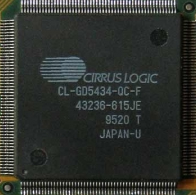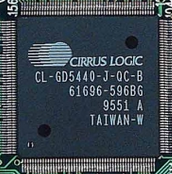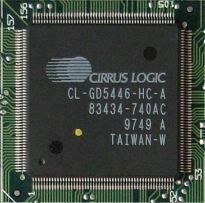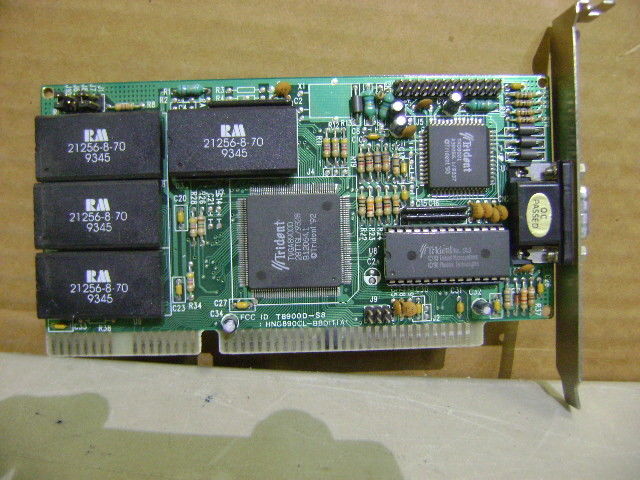 Cirrus Logic
Cirrus Logic
Cirrus Logic was a graphics chipset manufacturer for the IBM PC and its compatibles. Founded in 1984 in Silicon Valley, their chipsets became very popular due to their low cost and high degree of compatibility.
The 1987 they entered into a contract with VideoSeven to design and manufacture a VGA chipset to VideoSeven's specifications. This was released as the CL-GD410/420.
During the early 90s, when compared to other Windows graphics accelerator cards from Trident, Oak, and Paradise (Western Digital), the Cirrus Logic usually outperformed them all.
In 1991 the company acquired Crystal Semiconductor, an audio mixer/DSP chip company. In 1992 they bought AcuMOS, a video chipset company who designed and manufactured chipsets called "AVGA1" and "AVGA2". These were rebranded in late 1992 to the CL-GD naming format.
Here are their cards in chronological order:
| ISA Cards | VLB, PCI and AGP Cards |
|---|---|
| ISA Graphics Cards CL-GD410/420 (1987) CL-GD510/520 (1988) CL-GD610/620 (1989) CL-GD5320 (1990) CL-GD5410 (1991) CL-GD5401 (1992) CL-GD5420 and CL-GD5421 (1992) CL-GD5422 (1992) CL-GD5402 (1993) CL-GD5426 (1993) CL-GD5428 (1993) VRAM-VGA / VRAM VGA (1988) VGA 1024i and VGA 1024i Plus (1989) VRAM II (1992) Win.VGA / Win VGA (1992) Win.Pro / Win Pro (1993) |
VLB and PCI Graphics Cards CL-GD5424 (1992) CL-GD5425 (1993) CL-GD5426 (1993) CL-GD5428 (1993) CL-GD5429 and CL-GD5430 (1994) CL-GD5434 and CL-GD5436 (1994) CL-GD5440 (1995) CL-GD5446 (1996) AGP Graphics Cards CL-GD5464 (1995) CL-GD5480 (199?) |
CL-GD5410
The CL-GD5410 was an ISA Super VGA chipset. It was installed on low-to-mid range DRAM-based cards (accelerated), and some laptops. It is known for being among the first to integrate the graphics card components into a single chip (built-in RAMDAC and clock generators). |
|
CL-GD5440
The CL-GD5440 was essentially a CL-GD5430 with an integrated CL-PX2070/'85 motion-video acceleration chip (CL-GD54M40 has integrated filters). The core clock runs at 86 MHz, the memory at 60 MHz. Found on:
|
|
|
|
 Launched: 1991
Launched: 1991



